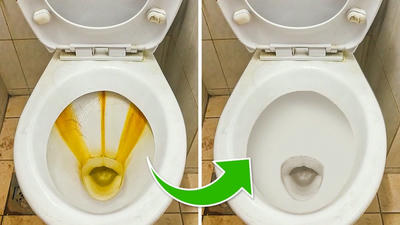Eco-Safe Ways to Sanitize Your Shower and Bathtub
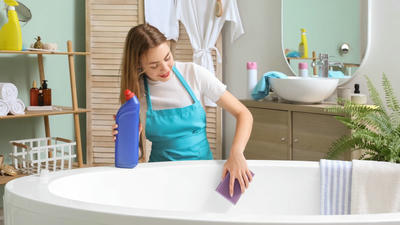
Keeping your shower and bathtub clean and sanitized is essential not only for hygiene but also for maintaining a pleasant and inviting bathroom environment. Traditional cleaning products can often contain harsh chemicals that are not only harmful to your health but also detrimental to the environment. Fortunately, there are many eco-friendly alternatives that can effectively sanitize your bathroom surfaces without compromising safety.
Understanding the Importance of Sanitizing Your Shower and Bathtub
Why Sanitize?
A clean shower and bathtub are crucial for several reasons:
Hygiene: Bathrooms are prone to bacteria, mold, and mildew due to the warm, moist environment. Regular sanitization helps to eliminate harmful pathogens that can lead to infections and illnesses.
Odor Control: Accumulated soap scum, dirt, and grime can contribute to unpleasant odors. Regular cleaning keeps your bathroom smelling fresh.
Preventing Mold and Mildew: Mold and mildew thrive in damp conditions. A clean bathroom reduces their growth, helping to maintain a healthy environment.
Appearance: A clean shower and bathtub enhance the overall look of your bathroom, making it more inviting for you and your guests.
Longevity of Fixtures: Regular maintenance helps to prevent soap scum and mineral deposits from damaging your fixtures over time.
The Eco-Friendly Approach
Choosing to use eco-safe methods for cleaning not only protects your health but also benefits the environment. Traditional cleaning products can contribute to indoor air pollution and waterways contamination. By opting for natural alternatives, you reduce your ecological footprint and promote sustainability.
Benefits of Eco-Friendly Cleaning:
Non-Toxic: Natural cleaning agents are less likely to irritate your skin and respiratory system compared to harsh chemicals.
Biodegradable: Eco-friendly products break down naturally, minimizing environmental impact.
Cost-Effective: Many eco-friendly cleaning solutions can be made from common kitchen ingredients, saving you money.
Sustainable: Supporting eco-friendly practices contributes to a healthier planet for future generations.
Essential Supplies for Eco-Safe Cleaning
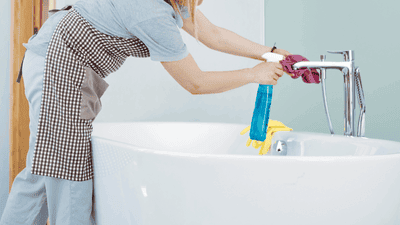
To start your eco-friendly cleaning journey, gather the following supplies:
Basic Cleaning Supplies
Baking Soda: A natural abrasive that helps scrub surfaces and neutralize odors.
White Vinegar: A powerful disinfectant that can dissolve mineral deposits, soap scum, and grime.
Liquid Castile Soap: A plant-based soap that acts as a gentle cleaner for various surfaces.
Essential Oils: Optional but effective for adding fragrance and enhancing the cleaning properties of your solutions. Popular choices include tea tree oil, lavender, and lemon.
Microfiber Cloths: Excellent for wiping down surfaces without scratching or leaving streaks.
Spray Bottles: Reusable spray bottles for mixing and storing your eco-friendly cleaning solutions.
Scrub Brushes: Non-scratch scrub brushes for tackling tougher stains and grime.
Rubber Gloves: To protect your hands while cleaning.
Step-by-Step Guide to Sanitizing Your Shower and Bathtub
Preparation
Clear the Area: Remove any items from your shower or bathtub, such as shampoos, soaps, and toiletries. This will give you full access to all surfaces that need cleaning.
Choose a Cleaning Time: Opt for a time when no one will be using the bathroom, allowing you to focus on the task without interruption.
Gather Your Supplies: Ensure that you have all the necessary cleaning supplies ready before you begin.
Cleaning Methodology
Step 1: Dry Dusting
Start by dusting the surfaces to remove any hair, dust, or loose debris.
- Dry Wipe Surfaces: Use a microfiber cloth to dry wipe the walls and ledges. This step prepares the area for deeper cleaning.
Step 2: Apply Eco-Friendly Cleaners
Option 1: Vinegar and Baking Soda Paste
Make the Paste: In a bowl, combine equal parts baking soda and water to create a thick paste.
Apply to Problem Areas: Apply the paste to any stained or dirty areas in your shower or bathtub. For extra grime, consider using vinegar first to break down tough stains before the paste.
Let it Sit: Allow the paste to sit for about 15-20 minutes. This will give it time to work on tough stains and soap scum.
Option 2: Vinegar Spray
Mix the Solution: In a spray bottle, mix equal parts white vinegar and water.
Spray Generously: Spray the vinegar solution liberally over the shower walls, bathtub surfaces, and the fixtures.
Let it Soak: Allow the solution to soak for about 10-15 minutes to effectively disinfect and break down grime.
Step 3: Scrubbing
Use a Scrub Brush: With your scrub brush or sponge, start scrubbing the surfaces you’ve treated with either the paste or the vinegar solution. Focus on areas affected by soap scum and hard water deposits.
Use a Microfiber Cloth: For delicate areas or to avoid scratching, use a microfiber cloth to wipe down surfaces, especially on fixtures and glass.
Rinse Thoroughly: After scrubbing, thoroughly rinse the surfaces with warm water. Ensure all cleaning products are washed away; this prevents any residue from forming.
Step 4: Final Touches
Dry the Surfaces: Use a clean microfiber cloth to dry the surfaces. This step prevents water spots from forming and helps shine your fixtures.
Wipe Fixtures: Don’t forget to wipe down the faucet handles and any other fixtures with a damp cloth to remove any remaining cleaner and to buff them dry.
Replace Items: Once everything is clean and dry, return all items to their original spots in the shower or bathtub.
Routine Maintenance
Maintaining your shower and bathtub’s cleanliness can be effortless with a regular cleaning schedule. Here are some tips for effective maintenance:
Daily Maintenance
Squeegee After Showering: After each use, take a few seconds to squeegee the walls of the shower and the bathtub. This helps to reduce the accumulation of soap scum and water spots.
Quick Wipe Down: Use a damp microfiber cloth to quickly wipe down surfaces after use, preventing buildup over time.
Weekly Maintenance
Set aside a day each week to perform a more thorough cleaning, similar to the steps outlined in the cleaning methodology.
Monthly Deep Cleaning
In addition to regular weekly cleanings, perform a deeper clean monthly to tackle areas that may not get as much attention:
Check Caulking and Grout: Examine the caulking around the tub and any grout lines. If you notice discoloration or mold, treat these areas with a mixture of vinegar and baking soda to reduce stains and prevent mold growth.
Inspect Fixtures: Ensure that all showerheads and faucets are clear of mineral deposits. If you notice buildup, soak a cloth in vinegar and wrap it around the affected area. Let it sit for an hour before wiping it clean.
Dealing with Specific Problems
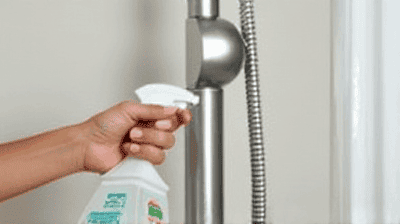
Hard Water Stains
Hard water stains can be a significant issue in humid environments. Here’s how to tackle them:
Use Vinegar Soak: Apply a mixture of vinegar and water to the stained area and let it sit for several minutes before scrubbing.
Baking Soda Scrub: Use baking soda with a scrub brush on stubborn stains. Baking soda’s abrasiveness can help lift the stains without harming the surface.
Mold and Mildew
Mold and mildew can pose health risks and create unpleasant odors. To combat these issues:
Vinegar Solution: Spray a vinegar solution on the affected areas and let it sit for at least an hour. Then scrub and rinse with warm water.
Tea Tree Oil: For a natural mold inhibitor, mix a teaspoon of tea tree oil in a spray bottle filled with water. Spray the mixture on moldy areas to help prevent future growth.
Soap Scum Build-Up
Soap scum can accumulate quickly. Here’s how to effectively manage it:
Frequent Cleaning: To prevent heavy buildup, incorporate weekly cleanings into your routine.
Castile Soap Addition: When making your cleaning solutions, add a few drops of liquid Castile soap. This can enhance the effectiveness against soap scum.
Eco-Friendly Alternatives to Commercial Products
If you prefer to use store-bought products, look for eco-safe alternatives that are biodegradable and non-toxic. Here are some options:
1. Natural Brands
Many brands focus on eco-friendly cleaning products that are effective and safe for the environment. Look for those that emphasize non-toxic ingredients and sustainable practices.
2. DIY Cleaning Solutions
Making your own cleaning products can allow for customization. Here are a couple of DIY recipes for effective bathroom cleaners:
Basic Bathroom Cleaner:
- 1 cup of distilled white vinegar
- 1 cup of water
- 10-15 drops of essential oil (such as lemon or tea tree)
Mix all ingredients in a spray bottle. Shake before use and spray on surfaces to clean.
Heavy-Duty Bathroom Cleaner:
- 1/2 cup baking soda
- 1/2 cup liquid Castile soap
- 1/2 cup water
Combine these ingredients in a bowl and mix until smooth. Apply the mixture to surfaces with a cloth or sponge.
Preventive Measures for a Cleaner Shower and Bathtub
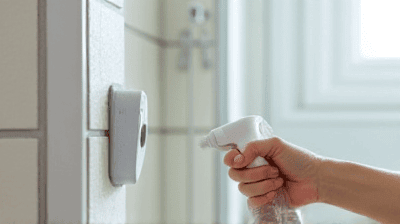
To maintain a cleaner shower and bathtub, consider implementing these preventive measures:
1. Install an Air Vent
Proper ventilation helps to reduce humidity levels in the bathroom, which can create an environment where mold and mildew thrive. An air vent or window can keep the room airy and dry.
2. Invest in a Shower Mat
Using a washable mat can absorb excess water and prevent moldy buildup on your bathtub floor. Ensure that it dries thoroughly between uses.
3. Use Eco-Friendly Bath Products
Many bath products contain harsh chemicals that can contribute to buildup. Opt for eco-friendly soaps and shampoos that are free of sulfates and parabens.
4. Keep the Bathroom Dry
Wipe down surfaces after bathing or showering to prevent moisture accumulation. Leave the bathroom door open or turn on a fan to circulate air and dry out the area.
Conclusion
Sanitizing your shower and bathtub can be effective, eco-friendly, and straightforward. By implementing the strategies and techniques outlined in this guide, you can maintain a clean and inviting bathroom environment without resorting to harsh chemicals.
Regular cleaning, combined with natural products and preventive practices, will ensure that your bathroom remains a pristine and safe space. Embrace the eco-friendly approach not just for your health, but for the planet as well. Remember, a little effort on your part leads to long-lasting cleanliness and a more enjoyable bathing experience for you and your family.

